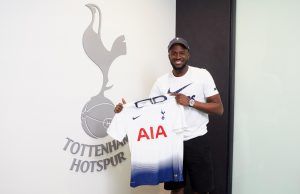The Mind of Conte: How Chelsea exploited West Brom’s lack of width
It was just a matter of winning two decisive fixtures that Blues have made it to the Top 3 – thanks to Spurs’ defeat against Arsenal as well. However, some important tactical changes also had to be made to re-balance Chelsea’s squad.
This involves 5-men midfield that Conte has just started to use, which enhanced midfield solidity and freed Fabregas to look for attacking chances more than before.
The absence of David Luiz, their defensive playmaker who has been known having limited positional discipline, is another tactical element meant to stabilize Chelsea’s defence after the 3-0 defeat against Roma in their last Champion League fixture.
Formation
The initial line up deployed Kante as buffer while Fabregas was placed as center mid so he could be able to race forward to create attacking chances.
This is another version of the formation Conte has recently started using a 5-man midfield, in which Fabregas fiercely roams around the field to create and find chances – and the Spaniard has been persistently proving himself in this role.
West Brom also used a 5-man midfield (3-5-2) matching up with Chelsea’s midfield meant to assist their counter attacking forays.
WBA narrowed down Chelsea
West Brom narrowed down Chelsea players via compact multiple pressing to outnumber Blues’ players present there for passing.
They used this counterattacking defensive tactic – outnumbering and narrowing down the opposition players around the ball – so that they could win the ball back mainly via interceptions; and the Baggies did win possessions this way many times.
They were in fact able to pose few counterattacking threats too but their moves were got cleared by Chelsea’s aggressive and timely pressing at the back.
Besides, Chelsea had already got the control of the game so they managed to spread their defensive organization in a more appropriate fashion right after they got realize the danger of these counterattacking moves.
Chelsea’s counter pressing
Chelsea countered Albion’s pressing tactic of narrowing down the opponents by having one or two players (mostly Morata or Hazard) to get behind WBA’s compact wall to stretch it using through passes.
They also sometimes dribbled in the open space when available to escape pressers and pass to the open flank. This way Chelsea frequently managed to get into the box.
Another tactic mostly used by Chelsea is Azpilicueta running from behind using spaces to get into opposition’s half and then delivering a cross in the box where Morata is usually waiting to convert it down. The Spanish defender tried this right in the start but Morata was already blocked by WBA’s wall to get into the box in time.
Chelsea exploited Albion’s lack of width
The narrowing down tactic by West Brom in fact worked in favor of Blues as they got the width to exploit.
At multiple occasions, Chelsea‘s midfielders and inside forwards kept compressing the ball in deeper areas to trap Albion’s pressers which opened up spaces in the wider areas or in the areas much beyond the opposition’s compact wall.
Morata’s goals – an outcome of WBA’s narrowing down tactic
The first goal by Morata was an indirect outcome of WBA’s compressing tactic which somehow went in favor of Chelsea.
As the pressers were occupied in narrowing down Hazard, marching into the box, the Belgian made a long shot outside the box which got saved but deflected out near Morata who finished it at the back of the net.
Morata was open in the box because Albion were concentrated around Hazard’s area at that time.
Hazard’s brace – outcome of Chelsea’s counter pressing strategy
Hazard’s both goals were the direct outcomes of Chelsea’s counter pressing strategy.
On his first goal, Fabregas, being marked around the center mid area, made a brilliant through pass to Morata.
As the Fabregas-Morata axis was vertically compressed by WBA, Morata – after receiving the ball from Fabregas – flicked the ball towards the box in the open area with his back facing the goal. From there, Hazard got to the ball while racing towards the box and managed to dribble past Foster to put it away in speed.
Similarly, on way of his second goal, as Albion were forcing Chelsea to compress at the left flank, Fabregas found space to pick the ball in the compressed zone and after dribbling it around threw a long pass to hazard in the last line who clinically dribbled around the pressers and finished in between them.
Alonso’s goal
The third goal by Chelsea was tactically teamed up. Fabregas sent free kick to Morata, who, getting into the open space well beyond WBA’s wall, flicked the ball to his (and of Foster’s) far side of the goal.
WBA compressed ball as an attacking tactic
Apart of narrowing down Chelsea to facilitate interception and counterattacking, West Brom used the compression tactic as a part of their attacking arsenal as well.
They concentrated themselves in active zone to have open man available at far side, yet Chelsea mostly managed to block their way to the farther region.
On the other hand, West Brom were not able to block Chelsea’s way to exploit the farther region like Chelsea did to them.
This is because Chelsea, unlike West Brom, spread their defensive formation well enough to establish balance in both deeper and wider areas which put WBA’s passing at risk outside the compressed zone.
Bakayoko should work on his finishing
As Chelsea’s frontline was marked always, Bakayoko often raced up to stretch the last line to get pass across the wall. Yet he missed a very important chance.
Bakayoko should work on his finishing as Blues rely more on their midfielders and backline to score with the main forwards marked throughout.
Conclusion
Be it possession, passing, controlling, or finishing, Chelsea were overall the better side.
Even though they came under the threat at few instances, their balanced distribution as well as Albion’s lack of same kept them dominated.
With Christensen as the center back, Blues’ backline is tactically improved; however, there needs to be more attacking elements added in the skillset of the new defenders and midfielders.
Written by Farkhanda Jabeen
Like O-Posts on Facebook
You can also follow O-Posts on Twitter @OPosts







0